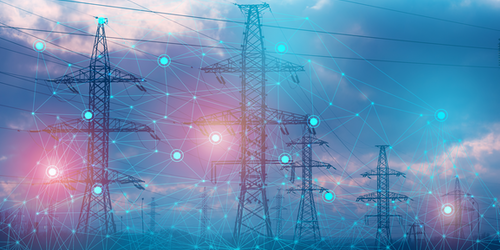Pinpointing Problems in Transmission Power Grids
In January 2019, residents of New England in the US experienced a power outage that was later attributed to a faulty steam turbine at a power plant nearly 1500 miles away in Florida. But at the time, local grid operators had no idea of the disturbance’s cause, which hindered their efforts to fix it. Now, thanks to Robin Delabays of the University of Applied Sciences of Western Switzerland and his colleagues, grid operators have a tool for pinpointing the source of a power-transmission problem [1]. The team’s tool uses an algorithm to find the source coordinates without knowledge of the grid’s global topology. The ability to rapidly detect the cause of a power outage could help avoid the outage causing a cascade of equipment failures, which cost significant time and money to fix.
A persistent, periodic disturbance of the mechanical components of an electrical grid can create “forced” oscillations in the power flowing through the system. These oscillations can manifest as tens- or hundreds-of-megawatt power swings along transmission lines that can be felt far away from a disturbance’s source.
To develop their tool, Delabays and his colleagues built a model of a power grid that accounts for the naturally present random power-flow fluctuations on transmission lines. They then used this model to determine the set of parameters needed to find the most likely origin of a forced oscillation in the grid. Applying their algorithm to historical US transmission system data recorded during known forced-oscillation events, the team showed that the tool correctly identified the sources of those oscillations. The researchers say that their work could help in mitigating forced oscillations in future renewable-energy power grids, where such oscillations could be a significant source of infrastructure failure and blackouts.
–Rachel Berkowitz
Rachel Berkowitz is a Corresponding Editor for Physics Magazine based in Vancouver, Canada.
References
- R. Delabays et al., “Locating the source of forced oscillations in transmission power grids,” PRX Energy 2, 023009 (2023).




